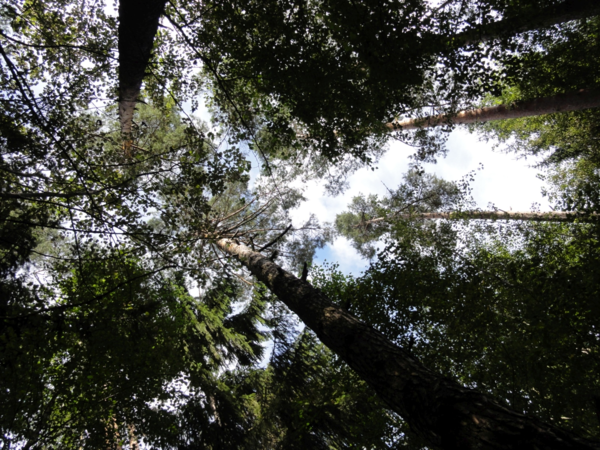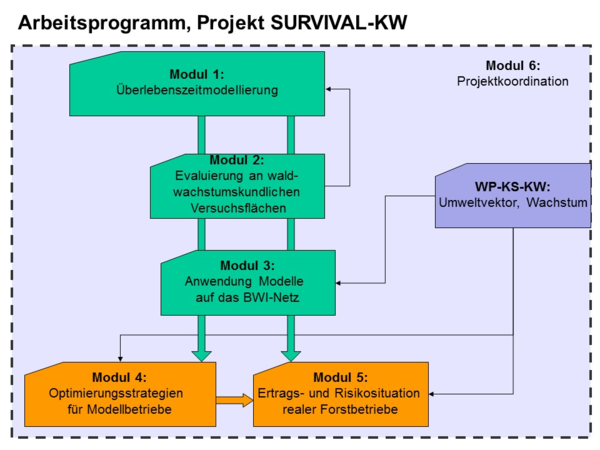Alterations in the lifetime of forest stands: Economic consequences of climate change for forestry enterprises. Management options for optimizing risk-return ratios under a changing climate

Forestry faces additional risks due to the consequences of climate change. The objective of this project is to generate models describing the entire range of survival times and risks for mortality and the factors that influence them based on a European data set. The respective models will be validated using experimental plots and, subsequently, applied to real and idealized forest estates. Potential management options to optimize the risk-return ratio under a changing climate will be investigated and assessed in terms of their economic outcomes.
The project will, thus, provide a generalizable quantification and economic assessment of changes in mortality and growth rates in European forest stands under increasing temperatures and decreasing precipitation.

For this purpose, survival times will be modelled for forest stands based on a European database (Level I and Level II). The relationships found will be applied and validated using a network of experimental plots to provide data for yield science in two German federal states. These improved functions will then be applied to the data from the National Forest Inventory in Germany (“BWI”, 60.000 measurement points). Using this dataset, management options in the form of different scenarios will be analyzed and assessed. This step will allow for optimizing short-term forest management decisions (i.e. harvest schedules) and long-term production planning options (i.e. tree species selection and stand structures) for idealized forest enterprises. These findings will be put into practice by analysing the returns and risk for different real world forest enterprises of different forest ownership types. The research results and data sets produced will be made available for future research and application as part of the National Forest Inventory dataset.
 Login
Login